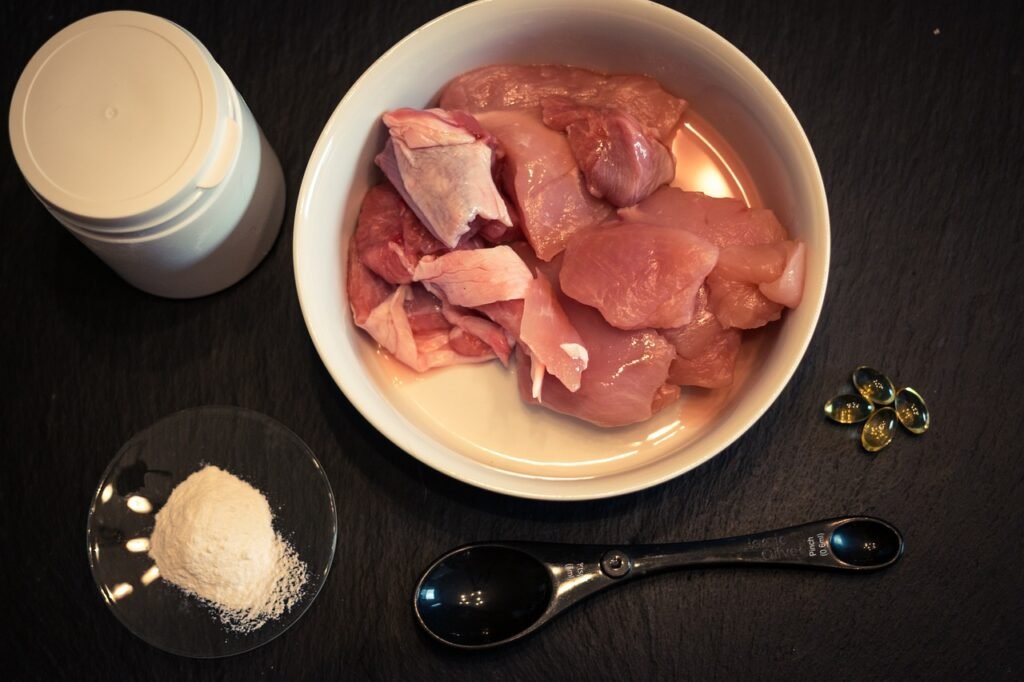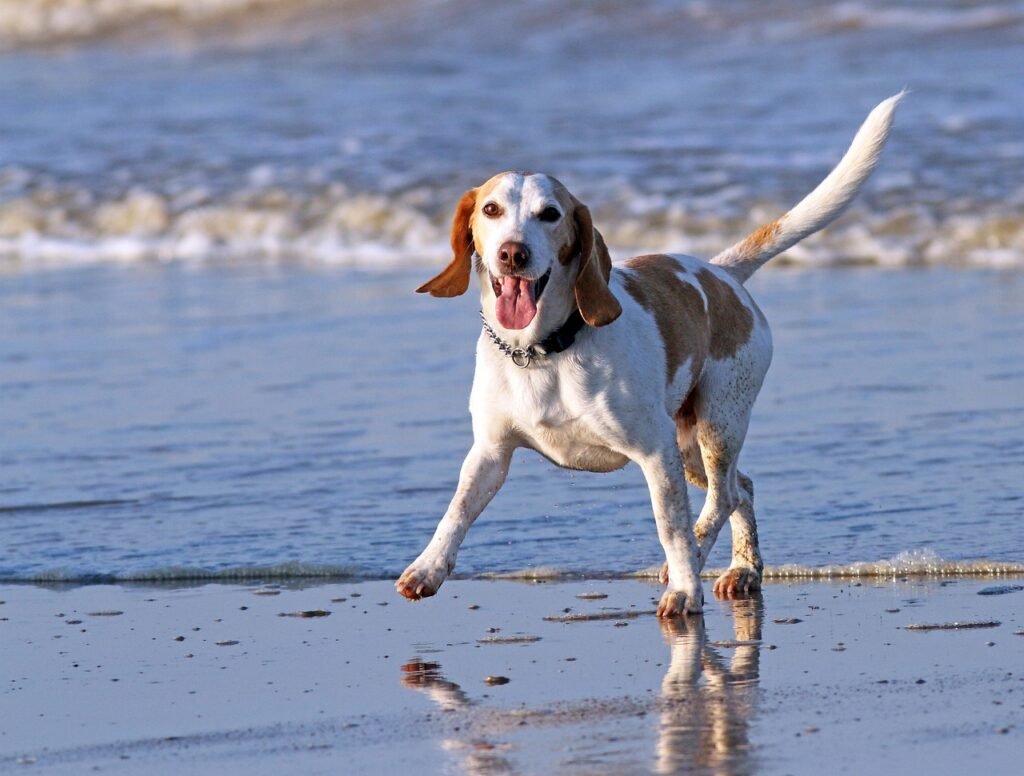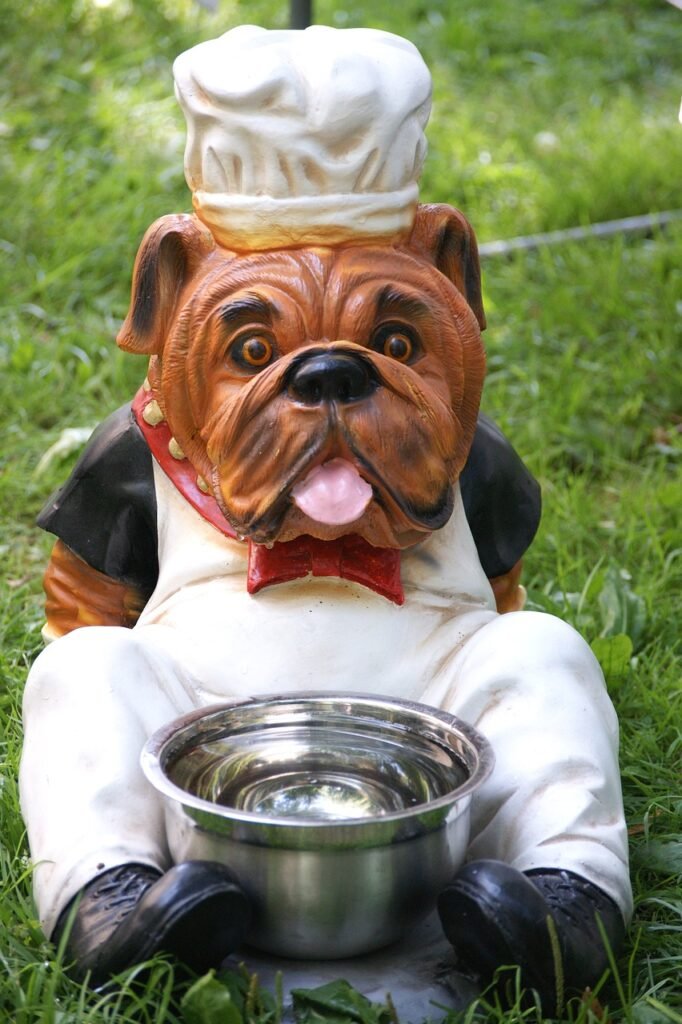Intro
When it comes to senior dog nutrition, raw dog food recipes have gained popularity for their potential health benefits. Senior dogs have specific dietary requirements that need to be met in order to support their aging bodies. In this blog post, we will delve into the details of creating a raw diet plan specifically tailored for small senior dogs.
The Raw Diet Basics: Meat, Bone, and Offal Ratios

Navigating the proportions of meat, bone, and offal within a raw diet is crucial for optimizing the health and well-being of small senior dogs. The foundation of their diet should predominantly consist of meat, as it’s a rich source of protein and essential amino acids vital for muscle maintenance and overall energy. Meat’s role is irreplaceable, accounting for approximately 70-80% of the dietary intake. This includes a variety of proteins such as beef, chicken, lamb, and fish to ensure a comprehensive amino acid profile.
Bone, while seemingly less significant, plays a pivotal role in providing calcium and phosphorus in their bioavailable forms, contributing to about 10-15% of the diet. This not only aids in maintaining strong bones but also assists in dental health, as the act of gnawing can help reduce plaque buildup.
Offal, or organ meats, should not be overlooked, constituting around 5-10% of the diet. These are packed with vitamins and minerals that are sometimes not as abundant in muscle meat. Organs like liver and kidney are nutrient-dense and support various bodily functions, including metabolism and detoxification processes.
Achieving the correct balance of these components is essential for meeting the dietary needs of small senior dogs. Each plays a unique role in sustaining health, from providing the building blocks for body tissues to ensuring optimal nutrient absorption. By carefully managing the ratios of meat, bone, and offal, pet owners can create a nourishing and balanced diet that supports the longevity and vitality of their senior companions.
Calculating Total Daily Diet Requirements

For small senior dogs transitioning to or maintaining a raw diet, understanding how to calculate their total daily dietary requirements is critical for their health and longevity. Generally, the guideline is that dogs should consume approximately 2-3% of their body weight in raw food daily. However, for small senior dogs, this percentage might need adjustment. Factors such as their metabolic rate, activity level, and any health concerns come into play.
For a small senior dog, the starting point could be closer to 2% due to potentially lower activity levels and slower metabolism as they age. For example, a 10-pound senior dog might begin with around 3.2 ounces of raw food per day. However, this is not a one-size-fits-all situation. Observing your dog’s weight and condition as they transition to or continue on a raw diet is essential. Weight gain suggests a need to decrease the daily intake, while weight loss indicates the opposite.
The calculation should not only focus on the amount but also on the distribution of nutrients within that portion. Ensuring that the meat, bone, and offal ratios are maintained within this quantity is key to providing a balanced diet. Meat should still form the bulk of the diet, with bone and offal making up smaller, yet vital, components.
Adjusting and fine-tuning your senior dog’s raw diet based on their specific needs, rather than strictly adhering to general guidelines, will promote optimal health and vitality during their senior years. Continuous observation and occasional adjustments ensure that the dietary requirements of small senior dogs are met with precision, catering to their unique needs as they age.
Transitioning to a Raw Diet: Tips and Strategies

Embarking on the transition to a raw diet for your small senior dog warrants a methodical approach, prioritizing their comfort and health. Initiating this change should not be abrupt; instead, integrate raw foods into their diet incrementally. Start by substituting a small portion of their current food with raw ingredients, gradually increasing the raw portion over a period of weeks. This gradual transition helps to mitigate the risk of gastrointestinal discomfort, allowing your dog’s digestive system to adapt to the new diet.
Engagement with a veterinary professional or a canine nutritionist is strongly recommended during this process. They can offer tailored advice and ensure that the transition does not negatively impact your dog’s health, especially considering the unique nutritional needs and potential health issues associated with senior dogs. Additionally, they can provide insights into any specific adjustments needed to accommodate your dog’s health status or activity level.
Monitoring your dog closely throughout this transition period is essential. Pay attention to their energy levels, stool consistency, weight, and overall demeanor. These indicators can provide valuable feedback on how well they are adapting to the raw diet and whether any further modifications are needed. Remember, every dog is an individual, and what works for one may not work for another. Therefore, being observant and responsive to your dog’s specific reactions to their new diet will be key in successfully transitioning your senior dog to a raw food regimen.
Potential Health Benefits and Considerations

The switch to a raw diet for your small senior dog holds the promise of notable health improvements, yet it’s paramount to navigate this transition with awareness and professional guidance. Among the myriad of advantages reported by pet owners, enhanced digestion stands out, often leading to more regulated bowel movements and less gastrointestinal distress. A raw diet’s natural ingredients can contribute to a more lustrous coat and healthier skin, reflecting the internal benefits of nutrient-rich, unprocessed foods. Additionally, an uptick in vitality and energy levels may be observed, breathing new life into your aging companion’s daily routine.
However, these potential benefits do not overshadow the necessity for a thoughtful consideration of your dog’s unique health profile. For dogs with chronic conditions or specific dietary needs, the raw diet must be approached with caution. The introduction of raw foods should be tailored to not exacerbate existing health issues, and in some cases, may not be advisable at all. Engaging with a veterinarian or canine nutritionist is not just recommended but essential. They can provide insights into how a raw diet may impact your dog’s health and suggest modifications to ensure the dietary change supports their well-being without compromise.
By taking a measured and informed approach to transitioning your small senior dog to a raw diet, you can optimize the potential for health benefits while minimizing risks. This careful balance underscores the importance of individualized attention to your dog’s dietary needs as they age, ensuring that their golden years are both healthy and joyful.
Example Menu for a Week

Crafting a balanced, nutritious weekly menu is key to supporting the health of your small senior dog through senior raw dog food recipes. Let’s dive into an example menu that caters to the specific needs of senior dog nutrition, ensuring a diverse and balanced diet. –
Day 1:
- Morning: 50g of raw kangaroo mince mixed with finely chopped carrots and green beans.
- Afternoon: 30g of raw chicken liver.
- Evening: 80g of raw turkey breast with mashed pumpkin.
Day 2:
- Morning: 50g of raw ground lamb mixed with cooked brown rice and grated zucchini.
- Afternoon: 30g of raw beef kidney.
- Evening: 80g of raw salmon fillet with diced cucumber.
Day 3:
- Morning: 50g of raw chicken mince mixed with grated sweet potatoes and blueberries.
- Afternoon: 30g of raw lamb heart.
- Evening: 80g of raw beef steak with steamed broccoli.
Day 4:
- Morning: 50g of raw ground pork mixed with mashed potatoes and peas.
- Afternoon: 30g of raw chicken gizzard.
- Evening: 80g of raw duck breast with sliced carrots.
Day 5:
- Morning: 50g of raw ground beef mixed with finely chopped kale and strawberries.
- Afternoon: 30g of raw turkey heart.
- Evening: 80g of raw kangaroo steak with mashed sweet potatoes.
Day 6:
- Morning: 50g of raw chicken mince mixed with grated carrots and apples.
- Afternoon: 30g of raw lamb liver.
- Evening: 80g of raw beef sirloin with cooked quinoa.
Day 7:
- Morning: 50g of raw ground turkey mixed with chopped spinach and raspberries.
- Afternoon: 30g of raw pork spleen.
- Evening: 80g of raw chicken wings with diced bell peppers.
Supplements and Additional Nutrients

Integrating a raw diet for your small senior dog marks a pivotal step towards enhancing their health. Yet, to ensure a holistic approach to their nutrition, it’s vital to consider the addition of specific supplements. This strategic supplementation aims to bridge any potential gaps, ensuring a comprehensive nutrient profile that supports their well-being at this delicate stage of life.
Fish oil emerges as a critical addition, offering omega-3 fatty acids which are essential for maintaining joint health and cognitive function, both of which are of paramount importance for aging dogs. Similarly, a carefully selected multivitamin can play a key role in supplementing their diet, providing an extra layer of nutritional security.
These enhancements should not be viewed as optional but rather as integral components of a well-rounded dietary regimen for senior dogs, facilitating their journey towards optimal health. Engaging in a dialogue with a professional can help tailor these supplements to your dog’s specific needs, ensuring they derive the maximum benefit from their diet.
Addressing Common Myths About Raw Diets for Dogs

Dispelling myths around raw diets for senior dogs is crucial for informed decision-making by pet owners. One prevailing concern is the risk of bacterial contamination. It’s understandable to worry about pathogens like Salmonella or E. coli. However, with rigorous standards in sourcing, handling, and preparing raw foods, the risk diminishes significantly.
Dogs, by nature, have a digestive system designed to handle a variety of bacteria, more so than humans. Another myth to confront is the notion that raw diets are inherently deficient in essential nutrients. This misconception overlooks the meticulous planning and balancing of a raw diet, ensuring that it meets all nutritional needs when properly formulated. Contrary to this belief, raw diets can be rich in natural enzymes, vitamins, and minerals, providing a senior dog with a level of vitality and wellness that might not be achievable with processed foods.
The skepticism surrounding raw diets often stems from a lack of familiarity rather than evidence-based conclusions. By fostering a deeper understanding of how raw diets are constructed and the natural benefits they offer, pet owners can navigate beyond these myths. It is essential to approach raw feeding with a mindset open to learning and consultation with veterinary professionals, as they can provide guidance tailored to an individual dog’s health profile and nutritional needs.
Ensuring Safety and Hygiene in Raw Feeding

Adopting a raw diet for your senior dog underscores the importance of rigorous safety and hygiene practices. Essential to the success of this dietary approach is the meticulous handling and storage of raw ingredients. This starts from the moment these ingredients are purchased, continuing through to preparation and serving. Refrigeration of raw meats at appropriate temperatures is critical, as is their prompt use or freezing to prevent spoilage.
When preparing your dog’s meals, use separate utensils and cutting boards to avoid cross-contamination with foods consumed by humans. This distinction helps in maintaining a clean preparation environment, significantly reducing the risk of bacterial transfer. Similarly, thorough washing of your hands before and after handling raw foods is non-negotiable, serving as a fundamental practice in safeguarding both your health and that of your dog.
Equally important is the cleanliness of your dog’s feeding area. Dishes should be cleaned after every meal, using hot, soapy water or a dishwasher to eliminate potential pathogens. This routine prevents the buildup of bacteria and ensures that your dog’s eating space remains sanitary.
Lastly, observing your dog’s health for any signs of adverse reactions or foodborne illnesses is essential. Prompt action and consultation with a veterinarian at the first sign of distress can prevent further complications, maintaining the health benefits of a raw diet while ensuring your senior dog’s safety and well-being.

